You searched for: sp新全讯线上娱乐【Aurl:www.8233066.com】送888元.text
<< Previous | Displaying results 1-50 of 73 for "sp新全讯线上娱乐【Aurl:www.8233066.com】送888元.text" | Next >>
-
Learning from an Orthodox Jewish teacher
PhotoChildren learn a religious text from an Orthodox Jewish teacher. Landsberg displaced persons camp, Germany, 1946-1947.

-
How To Identify Reputable Historical Sources
ArticleHistorical events should be analyzed in their appropriate historical context. Learn how to assess the identify the quality, reliability, and integrity of a source.

-
Eugenics poster
PhotoEugenics poster entitled "The Nuremberg Law for the Protection of Blood and German Honor." The illustration is a stylized map of the borders of central Germany upon which is imposed a schematic of the forbidden degrees of marriage between Aryans and non-Aryans and the text of the Law for the Protection of German Blood. The German text at the bottom reads, "Maintaining the purity of blood insures the survival of the German people."
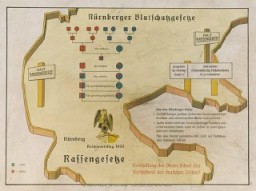
-
John Reed
PhotoPortrait of American journalist John Reed, circa 1914. Reed's book Ten Days that Shook the World was among the texts Nazi students burned in 1933.
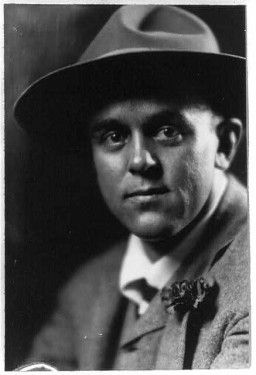
-
Sigrid Undset
PhotoSigrid Undset's novels were among the texts the Nazis banned and burned. Undset had previously won the Nobel Prize for Literature in 1928.
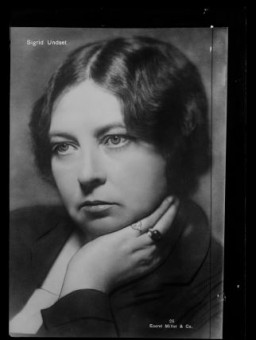
-
Mein Kampf
ArticleAdolf Hitler's Mein Kampf (My Struggle) is the best known and most popular Nazi text ever published with over 12 million copies sold from 1925 to 1945.
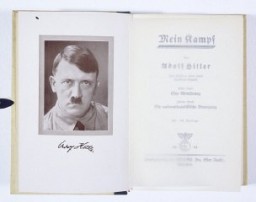
-
Anti-Masonic poster
ArtifactEugenics poster entitled "The relationship between Jews and Freemasons." The text at the top reads: "World politics World revolution." The text at the bottom reads, "Freemasonry is an international organization beholden to Jewry with the political goal of establishing Jewish domination through world-wide revolution." The map, decorated with Masonic symbols (temple, square, and apron), shows where revolutions took place in Europe from the French Revolution in 1789 through the German Revolution in 1919. This…
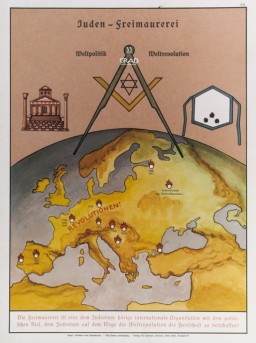
-
Wannsee Protocol
ArticleThe Wannsee Protocol documents the 1942 Wannsee Conference participants and indicates their agreement to collaborate on a continental scale in the Final Solution.

-
Booklet about International Military Tribunal
ArtifactFirst page of a program booklet distributed during the International Military Tribunal at Nuremberg. The dramatic text sets the scene in the courtroom.

-
Paul Klee
ArticlePaul Klee was a German-Swiss painter and graphic artist who taught at the Bauhaus. His art was targeted in the Nazi book burnings and “Degenerate Art” exhibition.
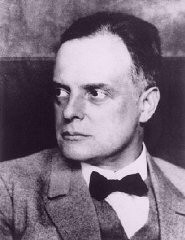
-
Judge Benjamin Barr Lindsey
PhotoAmerican judge Benjamin Barr Lindsey and his wife on a ship. Judge Lindsey's writings were among the texts the Nazis singled out during the 1933 public burnings of books. Photo dated December 4, 1915.

-
Genocide Timeline
ArticleKey dates in the use of the term genocide as part of the political, legal, and ethical vocabulary of responding to widespread threats of violence against groups.

-
Pupils at a public school on Zamarstynowska Street in Lwów, Poland, circa 1930
PhotoStudents sit at their desks in a classroom at a Polish-language public elementary school in Lwów around 1930. In interwar Poland, Jewish children could attend public or private schools. The curriculum in these schools was based on a secular education, in contrast to the traditional heder where boys were schooled in Jewish texts and traditions. This particular school was located in the city’s predominantly Jewish neighborhood and almost all of the students were Jewish. Before attending this school,…
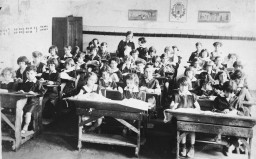
-
Protocols of the Elders of Zion - Artifact/Document
Media EssayThe Protocols of the Elders of Zion is the most widely distributed antisemitic publication of modern times. It falsely purports to be the record of secret meetings of Jewish leaders who were plotting to take over the world. In 1921, a London...
-
Mishneh Torah
ArtifactA page from the Mishneh Torah, one of many texts reprinted in Shanghai during the war. Yeshiva students spent part of each day listening to teachers lecture on the Talmud, the collection of ancient Rabbinic writings and commentaries composed of the Mishnah and the Gemara that form the basis of religious authority in Judaism. During the rest of the day, students paired up to review selections from the lecture. [From the USHMM special exhibition Flight and Rescue.]

-
Poster in Hebrew for army recruitment and rescue efforts
PhotoA poster in Hebrew soliciting contributions from members of the Yishuv (the Jewish community of Palestine) for army recruitment and for efforts to rescue European Jewry. The Hebrew text reads "Give a hand in rescue, the Fund for Recruitment and Rescue." Palestine, July 22, 1943.
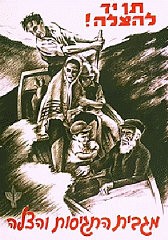
-
Page from The Poisonous Mushroom
PhotoPage from Der Giftpilz (The Poisonous Mushroom). This photograph shows a page from one of several antisemitic children's books published by Julius Streicher's Der Stürmer-Verlag, used for indoctrinating youth. The text reads, "The Jewish nose is crooked at its tip. It looks like the number 6."
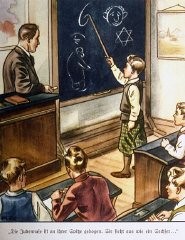
-
Official postcard for use by prisoners of Esterwegen
PhotoOfficial postcard for use by prisoners of the Esterwegen concentration camp. Esterwegen, near Hamburg, was one of the early camps established by the SS. The text at the left side gives instructions and restrictions to inmates about what can be mailed and received. Germany, August 14, 1935.
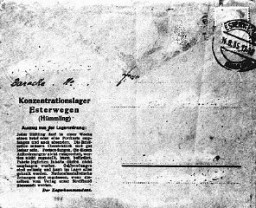
-
Soup kitchen run by the American Jewish Joint Distribution Committee
PhotoWomen and children gather at the door of a soup kitchen maintained by the American Jewish Joint Distribution Committee. The text in Yiddish reads "The fortunate ones with full bowls." Zelechow, Poland, 1940.
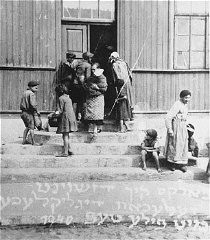
-
Racist illustration
PhotoThis 1938 racist illustration compares “German Youth” with “Jewish Youth.” It is subtitled, “From the face speaks the soul of the race.” It comes from Alfred Vogel's text Inheritance and Racial Hygiene. The Nazis used racist theories to label groups of people as inferior and as the "enemy." The Nazis claimed that "superior" races had not just the right but the obligation to subdue and even exterminate "inferior" ones.
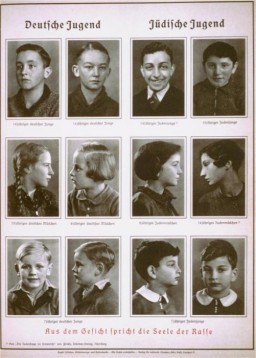
-
Propaganda Slide in a Hitler Youth Educational Presentation
Photo33rd Nazi propaganda slide of a Hitler Youth educational presentation entitled "Germany Overcomes Jewry." The text in German reads: "Zum Schutze des deutschen Blutes vor fremdrassiger Vermischung erliess der Fuhrer die." Translation: "For the protection of German blood against alien race mixing the Führer issued Nuremberg Laws."
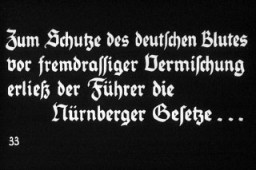
-
Page from the diary of Peter Feigl
PhotoPage from the diary of Peter Feigl, a Jewish child hidden in the Protestant village of Le Chambon-sur-Lignon. The photos show his parents, who perished in a concentration camp. The text is in French and German. Le Chambon-sur-Lignon, France, 1942-1943.

-
Reversal of Fortune: Robert Kempner
ArticleLawyer Robert Kempner was expelled from Germany in 1935. After WWII, he would return to serve as assistant US chief counsel during the IMT at Nuremberg.
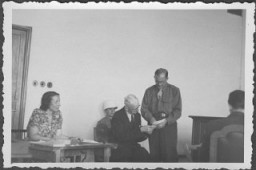
-
Artist on the Blacklist: Ludwig Meidner
ArticleLudwig Meidner was an Expressionist artist and poet. He was on the list of banned writers and artists in Nazi Germany. Monographs about him were burned in 1933.
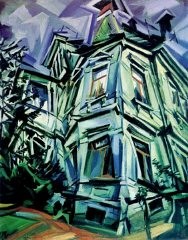
-
Kurt Pinthus
ArticleKurt Pinthus was a German Jewish journalist and critic connected to the Expressionistic movement. His works were burned in Nazi Germany in 1933. Learn more.
-
Marc Chagall
ArticleMarc Chagall was an artist who depicted rich imagery of Russian and Jewish life. His art was targeted in the Nazi book burnings and “Degenerate Art” exhibition.

-
German Order Police Battalion 101
PhotoA member of the German Order Police Battalion 101 stands next to a sign marking the entrance to the Lodz ghetto in German-occupied Poland, 1940–1941. The German text of the sign reads: "Announcement: In accordance with a police order of February 8, 1940, all Germans and Poles are forbidden entry into the ghetto area."

-
The Times, August 17, 1921
Media EssayIn 1921, a London Times article provided proof exposing the Protocols of the Elders of Zion as fraudulent. The most widely distributed antisemitic publication of modern times, the Protocols falsely purports to be the record of secret meetings of Jewish leaders who were plotting to take over the world. The text has been repeatedly discredited since, but continues to circulate today.
-
Edward Vebell courtroom sketch
ArtifactCourtroom sketch drawn during the International Military Tribunal by American artist Edward Vebell. The drawing depicts defendants Rudolf Hess and Wilhelm Keitel, with this accompanying text: "Hess looked very hollow cheeked and thin necked. He seemed to ignore the proceedings and kept his head down, absorbed in a book. Keitel tried to retain a rigid military bearing and strike haughty poses." Nuremberg, Germany, 1945.
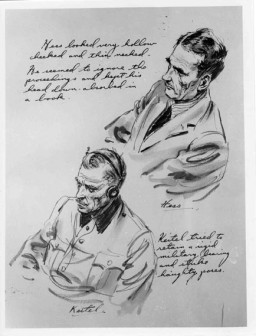
-
Hoess affidavit
ArtifactAffidavit signed by Rudolf Hoess attesting to the gassing of Jews while he was the commandant of the Auschwitz killing center. The German text reads: "I declare herewith under oath that in the years 1941 to 1943 during my tenure in office as commandant of Auschwitz Concentration Camp 2 million Jews were put to death by gassing and a 1/2 million by other means. Rudolf Hoess. May 14, 1946." The confession is also signed by Josef Maier of the US Chief of Counsel's office. A photoreproduction of the original…
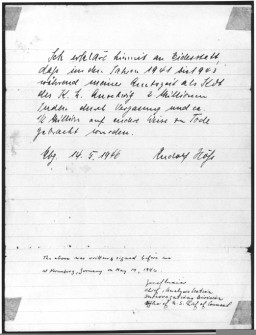
-
1934 Nazi Party propaganda poster
PhotoNazi propaganda constantly reinforced the notion that Hitler was the embodiment of the national will. Here, a determined looking Hitler in military dress stands with clenched fist, poised for action above the adoring crowd. The text on the poster says "Yes! Leader, We Follow You!" (Ja! Führer wir folgen Dir!) This poster, designed for a 1934 public referendum on uniting the posts of German chancellor and president, conveys unanimous popular support for Hitler.
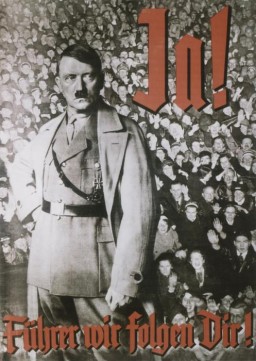
-
Karl Marx
ArticleKarl Marx was a political theorist and philosopher. He published “The Communist Manifesto” with Friedrich Engels. His works were burned in Nazi Germany in 1933.
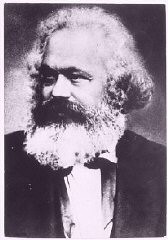
-
The "We Will Never Die" Pageant
Article"We Will Never Die" was a 1943 musical stage performance that raised awareness among Americans about the murder of European Jews. Learn more.

-
Hitler Youth "Youthfest" badge
ArtifactThis badge shows the Hitler Youth insignia and Nazi German national symbol superimposed over ring bearing the raised text, "Deutsches/Jugendfest 1936." Beginning in 1933, the Hitler Youth and the League of German Girls had an important role to play in the new Nazi regime. Through these organizations, the Nazi regime planned to indoctrinate young people with Nazi ideology. This was part of the process of Nazifying German society. The aim of this process was to dismantle existing social structures and…
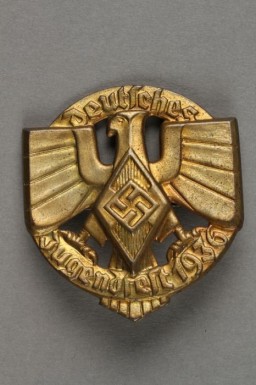
-
Pages from a child's diary
PhotoIllustrated page of a child's diary written in a Swiss refugee camp. The diary entry describes how they crossed the border into Switzerland. The text reads, "We came out of the woods and into a clearing: we had to be as quiet as possible because we were so close to the border. Oh! I almost forgot! Before we came out of the woods, they made us stand still for a quarter of an hour while they went to explore the area and to cut through the fence. Fortunately, shortly thereafter, we began to walk again. We saw…
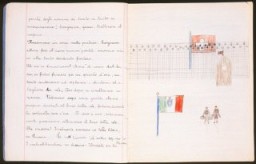
-
Illustrated page of a child's diary written in a Swiss refugee camp
PhotoIllustrated page of a child's diary written in a Swiss refugee camp. The diary entry describes how they crossed the border into Switzerland. The text reads, "We came out of the woods and into a clearing: we had to be as quiet as possible because we were so close to the border. Oh! I almost forgot! Before we came out of the woods, they made us stand still for a quarter of an hour while they went to explore the area and to cut through the fence. Fortunately, shortly thereafter, we began to walk again. We saw…
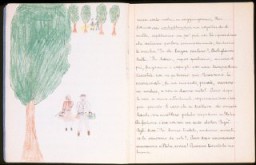
-
Coining a Word and Championing a Cause: The Story of Raphael Lemkin
ArticlePolish-Jewish lawyer Raphael Lemkin introduced the word genocide in 1944 and lobbied tirelessly for its addition as a crime in international law.
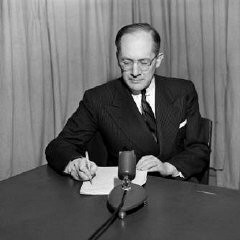
-
UN Convention on the Prevention and Punishment of Genocide
Timeline EventJanuary 12, 1951. On this date, the United Nations Convention on the Prevention and Punishment of Genocide entered into force.
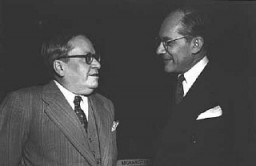
-
Art and Survival: György Beifeld's Visual Memoir from the Russian Front, 1942–1943
ArticleGyörgy Beifeld, a Jewish conscript in the Hungarian army, created a visual memoir of his experiences on the eastern front in 1942–1943 as a member of a forced-labor battalion .

-
Shlomo Reich
ID CardShlomo was one of seven children born in Lodz to the Reich family. The Reichs were a religious Jewish family, and Shlomo's Hasidic father wore earlocks and a traditional fur hat. After public school every day, Shlomo attended the Ostrovtze Yeshiva, a rabbinical academy where he studied Jewish holy texts. Shlomo's father owned a shoelace factory. 1933-39: The Germans invaded Lodz in September 1939 and began to institute anti-Jewish measures. Jews were not allowed to use public transportation, to leave the…

-
Elie Wiesel: Days of Remembrance excerpts
ArticleExcerpts from Elie Wiesel's addresses during US Holocaust Memorial Museum Days of Remembrance commemorations in 2001, 2002, 2003, and 2004.
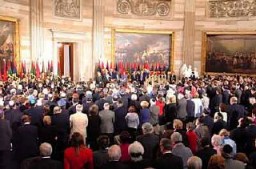
-
Tower of Sephardic faces: The Jewish community of Monastir, Macedonia
ArticleOn March 11, 1943, over 3,000 of Monastir’s Jews were deported to Treblinka. Learn more about the history of the community and postwar memorialization.

-
Jewish Community of Monastir: A Community in Flux
ArticleThe Sephardic Jewish community of Monastir was historically the largest Jewish community in Macedonia. Learn about the community before and during WWII and the Holocaust.
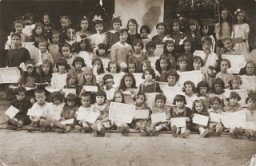
-
Purim
ArticleLearn about the background and traditional observances of Purim, a Jewish holiday marking the deliverance of the Jews from a royal death decree.
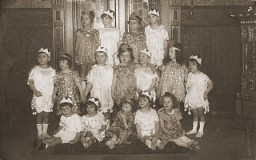
-
Evidence from the Holocaust at the First Nuremberg Trial
ArticleProsecutors before the IMT based the case against 22 leading Nazi officials primarily on thousands of documents written by the Germans themselves. Learn more.

-
Avraham Tory
ArticleLearn about the Kovno ghetto diary and other documents Avraham Tory saved in a secret archive that documented life in the ghetto.
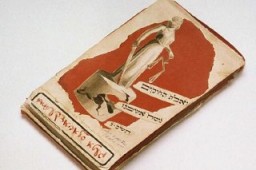
-
“Czech Family Camp” at Auschwitz Liquidated
Timeline EventJuly 11, 1944. On this date, the liquidation of the "Czech family camp" in Auschwitz took place. Michael Kraus later described the event in his diary.
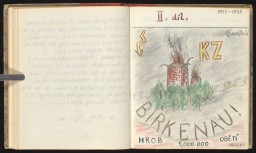
-
Protocols of the Elders of Zion
ArticleThe Protocols of the Elders of Zion is the most widely distributed antisemitic publication of modern times. Although repeatedly discredited, it continues to circulate.
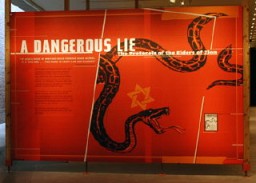
-
Saul Ingber
ID CardSaul was born to a Jewish family in the small northern Transylvanian town of Moisei, famous for its 18th-century monastery, to which many Christians came on pilgrimage. Saul's family was religious. His father transported lumber to several mills in the area. 1933-39: Saul and his brothers attended a Jewish school held at their neighbor's home. A rabbi led them in prayers and they learned quotations from holy texts. After his schooling he needed to learn a trade, so he decided to become a tailor. Jews were…
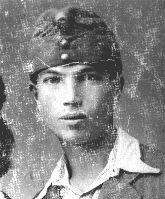
-
Alice Lok
ID CardAlice grew up in a Jewish family in Sarvar, Hungary, near the Austrian border. She had two younger brothers and an older sister. Her father worked for the family's carpet weaving and import/export business and was often away, traveling to their Budapest office. Alice's grandfather was a community leader and president of one of Sarvar's synagogues. 1933-39: Alice had a very special relationship with her grandfather. She admired him. People knew that they could always come to him for help of any kind. He…

